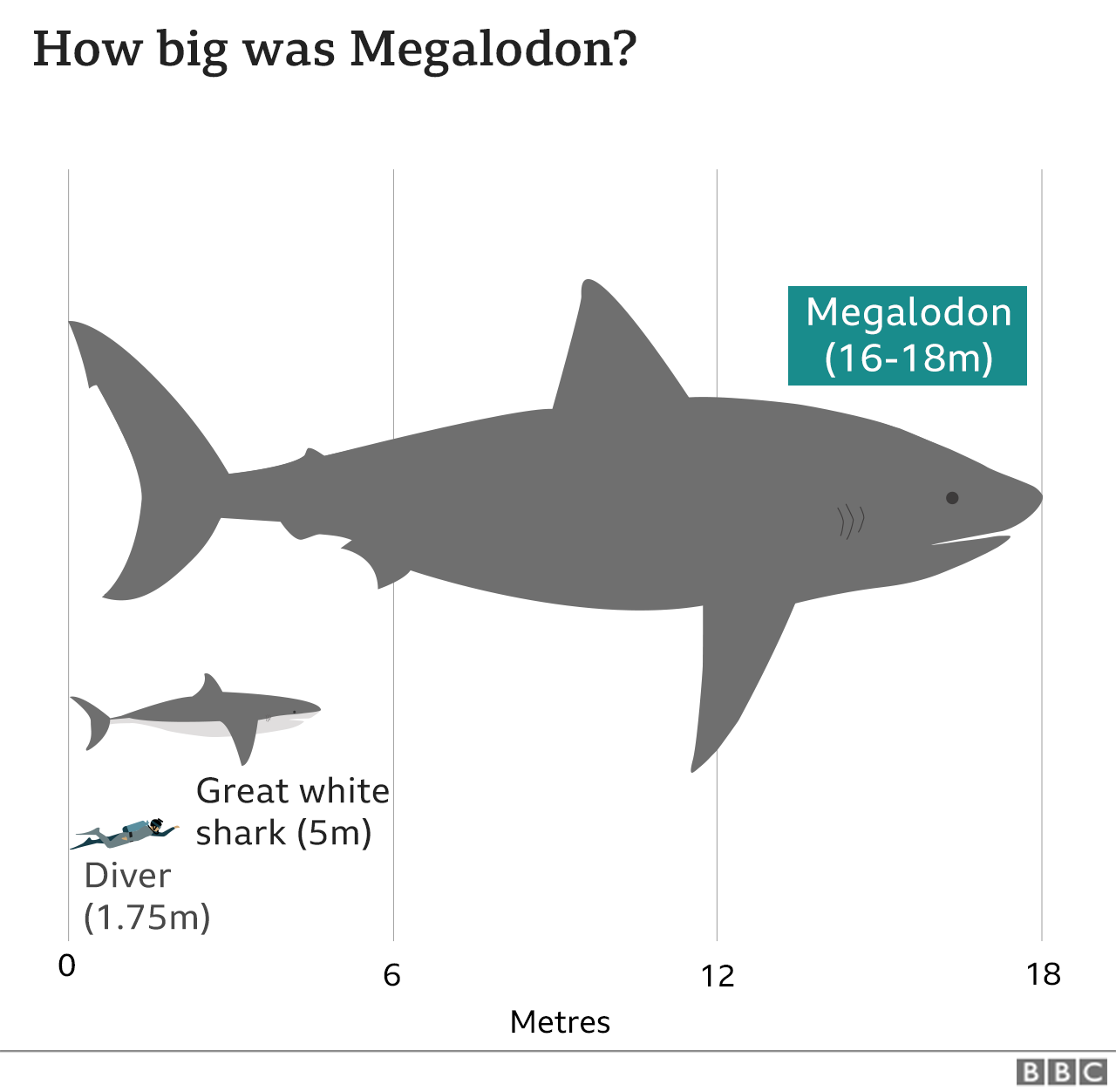Girl, nine, finds megalodon shark tooth on Maryland beach
- Published

Molly poses with her megalodon tooth
Amateur fossil hunters dream of finding the ancient and the rare. One little girl spoke it into existence.
Molly Sampson, nine, was on a Christmas Day visit to Calvert Beach in Maryland, and told her mother she was "looking for a Meg".
Wading in knee-deep waters, that's exactly what she found: a tooth belonging to the now-extinct Otodus megalodon shark species.
A local marine museum's curator called it a "once-in-a-lifetime kind of find".
The megalodon - ancient Greek for "big tooth" - lived in seas worldwide until it died out at least 3.5 million years ago.
Growing to more than 66ft (20m) long, the species was not only the biggest shark in the world, but one of the largest fish ever to exist.
The tooth Molly found was 5in long, as big as her hand, according to her mother Alicia Sampson, who shared news of the find on Facebook.
Mrs Sampson wrote that her daughters, Molly and Natalie, wanted to "go sharks tooth hunting like professionals" and had asked for insulated chest waders as a Christmas present.
Almost as soon as they received their gifts and finished their breakfasts on Christmas morning, they headed to the shores of nearby Calvert Cliffs with her husband Bruce, she told the BBC's US partner CBS News.
"She told me she was wading in knee deep water when she saw it and dove in to get it," Mrs Sampson said of her daughter's find. "She said she got her arms all wet, but it was so worth it."
Her husband had hunted for fossils in the area since he was a child, and Molly had found over 400, much smaller teeth in her own right, she said, but neither had ever encountered a tooth so large.
"She has always wanted to find a 'Meg', but for whatever reason, she spoke it into existence on Christmas morning," Mrs Sampson told CBS.
The family took the tooth to the Calvert Marine Museum, whose paleontology department confirmed the shark's identity and congratulated the "future paleontologist" on Facebook.
"People should not get the impression that teeth like this one are common along Calvert Cliffs," Stephen Godfrey, the museum's curator of paleontology, said.
"And she didn't have to dig into the cliffs to find the tooth, it was out in the water."
